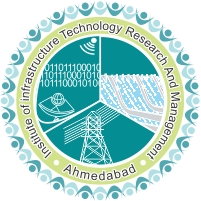Remotely Sensed Rivers in the Age of Anthropocene. Environmental Science and Engineering; Edited By: Subodh Chandra Pal, Uday Chatterjee, Martiwi Diah Setiawati, Dipankar Ruidas
Authors :- Pooja Patel, Rohan Kar, and Arindam Sarkar
Publication :- Environmental Science and Engineering, Springer, Cham, 2025
Floods are one of the most frequent disasters occurring at the moment, owing to climate change and increased extreme storm events. Existing research has shown that the Mand River basin in Chhattisgarh is highly vulnerable to the impacts of climate change, leading to recurrent levels of flooding. Despite frequent instances of riverine floods, the Mand basin remained unassessed. Thus, in this study, the flood prone zones of the Mand basin are delineated using GIS integrated Analytical Hierarchy Process (AHP). To develop flood hazard map, seven flood causative factors involving geological, meteorological, land use and land cover, and topographical factors are considered. In absence of sufficient datasets on the Mand basin for validation, two different ranking scenarios are considered to prepare flood hazard maps, which is validated using pseudo ground truth points and information gathered from online reports and documents. The results showed that the flood map obtained by prioritizing drainage density and proximity to river identified the flood-prone zones relatively better than the map obtained with slope and elevation prioritized. The results showed that approximately 40% of the catchment area falls under high to very high flood susceptible zone associated with extreme precipitation and overtopping of streams. Moreover, the hazard map may be used by policymakers to enhance risk mitigation and minimize flood-related losses by implementing a well-planned urbanization strategy.

